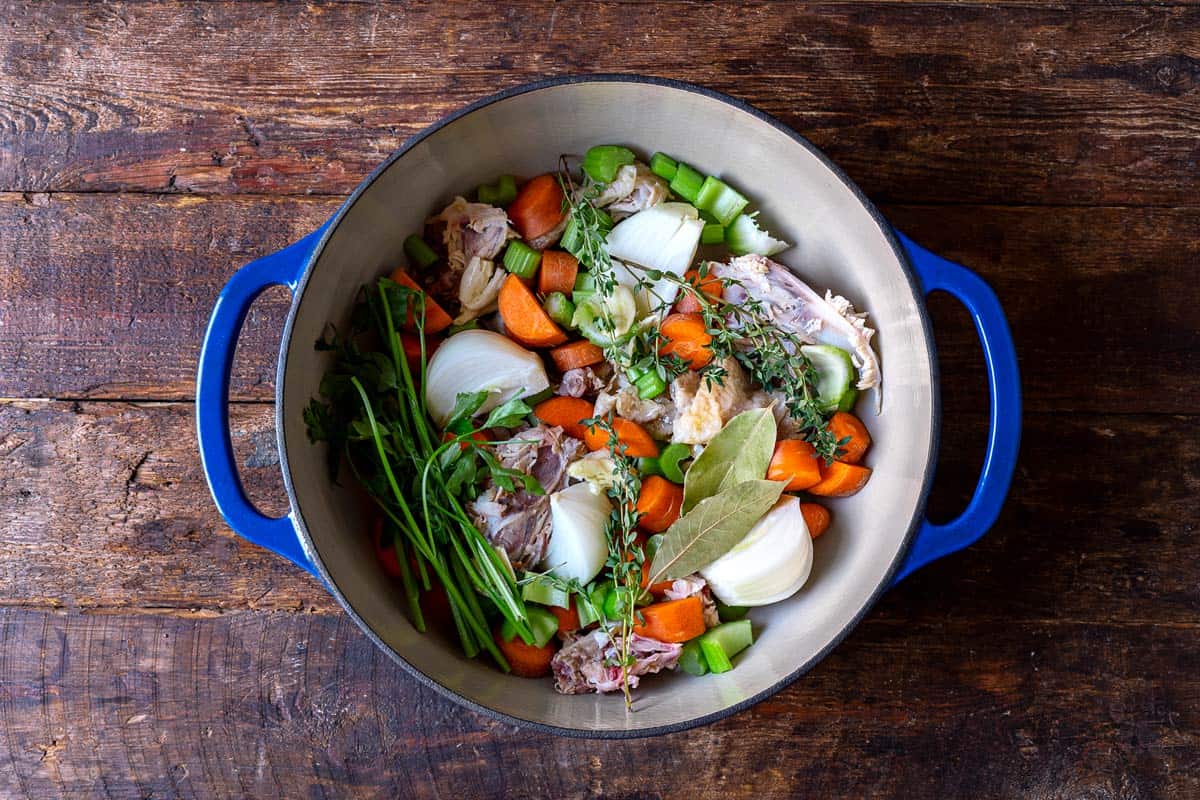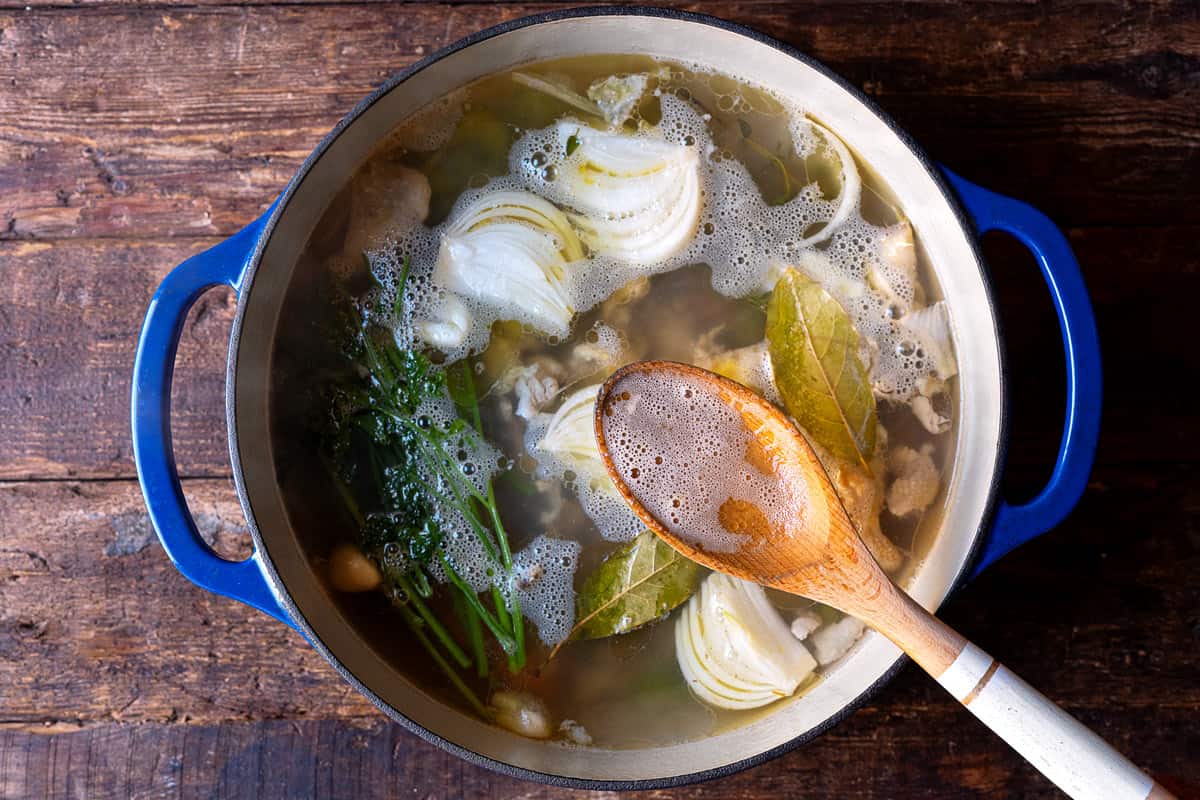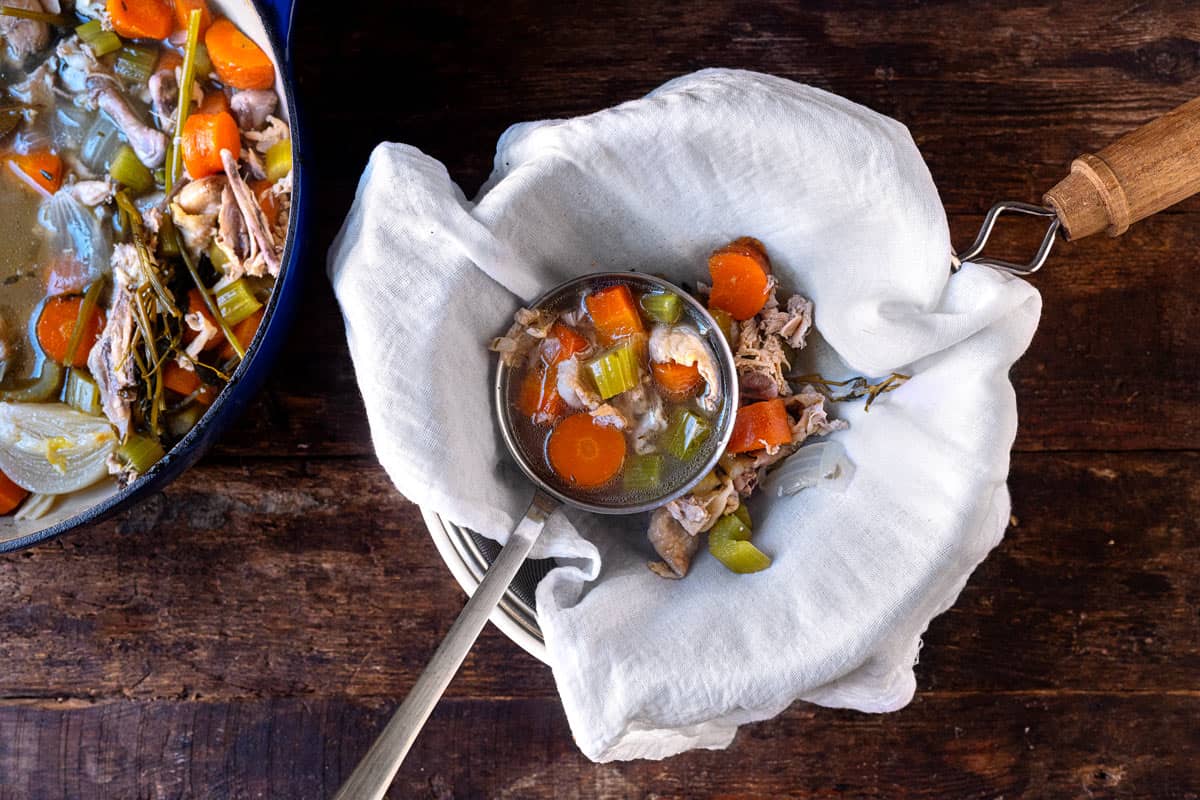Boiling chicken bones to make homemade stock is an easy, budget-friendly way to get the most out of your chicken. The simmering time releases gelatin collagen, nutrients and flavor from the bones into the water transforming it into a rich, golden chicken broth. But exactly how long does it take to boil a chicken carcass to extract all that goodness?
Overview of Chicken Stock
Chicken stock is made by simmering chicken bones meat scraps vegetables and herbs in water for an extended period of time. This allows the water to extract gelatin, collagen, vitamins and minerals from the bones, as well as absorb flavor from the vegetables and herbs.
The end result of this long simmering time is a rich, nourishing homemade chicken broth that can be used as the base for soups, stews, gravies, risotto and more. It’s more cost effective and flavorsome than store-bought broths.
How Long to Boil Chicken Bones for Stock
To fully extract gelatin, nutrients and flavor, chicken bones need to be simmered for 2-4 hours to make a good homemade stock. Many recipes call for simmering for at least 3 hours.
Here are some general guidelines for boil times
- 2 hours will extract a decent amount of gelatin and flavor
- 3 hours is ideal for a rich, flavorful homemade stock
- 4 hours results in a very concentrated, gelatinous stock
Simmering times over 4 hours are not necessary and can result in a greasy, bitter stock.
The boiling time can vary slightly based on the specific bones used:
- A whole chicken carcass may need closer to 4 hours
- Bones with more cartilage and connective tissue like chicken feet, necks or wings can be done in 2-3 hours
- Meatless bones may only need 2 hours
Tips for the Best Homemade Chicken Stock
Follow these tips to end up with the most flavorful, nutritious chicken stock:
- Start with cold water – hot water prevents flavors and nutrients from being extracted
- Keep at a gentle simmer – boiling causes emulsification which results in a cloudy, greasy broth
- Skim foam that rises to the top while simmering – this keeps the stock clear
- Add vegetables like onion, carrots, celery for flavor and nutrients
- Don’t add salt while cooking – salt is added later to prevent over-salting as the stock reduces
- Strain the stock through a fine mesh strainer before use
- Cool and refrigerate – the fat will rise and solidify, allowing for easy removal
Making your own chicken stock at home is simple, budget-friendly and delivers superior flavor compared to store-bought. Just be sure to simmer those chicken bones for 2-4 hours for the best results. With the right technique, you’ll have a tasty homemade stock ready for all your cooking needs.
Frequently Asked Questions
Can I boil a chicken carcass for too long?
Yes, it is possible to boil chicken bones for too long. Generally, simmering for longer than 4 hours is not recommended as it can make the stock greasy and bitter tasting. The collagen starts to break down too much past the 3-4 hour mark.
Should I simmer or boil chicken bones for stock?
For the clearest, best tasting stock, bones should be simmered, not boiled. A gentle simmer extracts gelatin and nutrients without emulsifying the fat and proteins. Boiling can make the stock cloudy and greasy. Keep the heat low enough that the water barely bubbles.
Is it better to roast the bones before making stock?
Roasting bones before simmering them enriches the flavor of the resulting stock. The dry heat caramelizes the exterior of the bones, adding deeper, roasted flavors. Roasted chicken carcasses make an especially flavorful stock.
Can I use a slow cooker to make chicken stock?
Yes, a slow cooker on low for 8-10 hours makes an excellent chicken stock. The low gentle heat slowly extracts flavors and gelatin without boiling. Just be sure to use less water since a slow cooker doesn’t evaporate liquid.
How can I tell when the chicken stock is done?
Check the color and taste the stock. When done, it will be a rich golden brown and have a full, meaty chicken flavor. The vegetables will also be completely softened. If the stock tastes weak, simmer it for another hour until the flavor develops.
Making homemade chicken stock is easy and rewarding. With the right amount of simmering time, usually 2-4 hours, you can extract maximum nutrients, gelatin and flavor from chicken bones for a tasty, nourishing broth.

How to Make Chicken Stock
Learning how to make chicken stock is easy. To make homemade chicken stock, place chicken bones, vegetables, herbs and spices into a large pot. Cover with cold water then simmer for about 3 hours. Let it cool, then skim the fat. Store in the refrigerator for up to 5 days or in the freezer for up to 6 months.
- Strip the chicken carcass of meat: This is hardly delicate work. You have to be willing to get your hands dirty to pull and peel the meat off the bones. Don’t forget to flip the bird over and pull the meat from the underside. There is plenty there. Transfer the meat to a container and keep in the fridge. Use it in soup, chicken salad, or to top a bed of greens. Now to address the bones.
- Make the stock: Into a large stock pot or Dutch oven add the chicken carcass – bones, skin and any random bits. Add the chopped celery, carrots, onion, garlic, thyme, bay leaves, parsley stems and peppercorns if using.

- Cover with cold water and simmer: Pour 10 cups of cold water over the ingredients in the stockpot and turn the heat to medium, just until you see a low boil, then reduce to medium low (or whatever temp you need to keep the stove at for a gentle simmer). You want the stock to simmer and never boil for any length of time because boiling can cause the fat and proteins to emulsify and give you dark, greasy stock. Cover with a lid.
- Skim the stock: Simmer on medium low for the next 3 hours. Check every 45 minutes or so and use a spoon to skim any foam that may form off the surface. This is not an exact science. If you lose track of time, and it simmers for 4 hours that’s Ok. You’ll just have a more concentrated stock and might need to add water. If you’re short on time and you only have 2 hours then you’ll just have a lighter stock. That’s Ok too. There is no room for perfectionists in stock making!

- Strain the stock: Layer a fine mesh strainer with cheesecloth. Set it over a large bowl, then ladle the stock into the lined strainer. Press on the solids to release any additional liquid. When it’s done you should have between 5 and 6 cups of stock depending upon how much it has reduced.

- Use, store or freeze: Now that you’ve made this golden elixir with bones and scraps, use it in your next batch of soup or freeze it for a rainy day. Transfer the stock to small containers so it cools down faster. Let it cool completely then cover and transfer to the fridge. Once stock sits in the fridge for a few hours or overnight a fat layer will form on the top. Go ahead and remove that fat layer. The stock will be gelatinous and wobbly when cold. that’s a good thing. Use it within 5 days or freeze it for up to six months.
What is the Difference Between Chicken Stock and Chicken Broth?
Chicken stock is made from bones and chicken broth is made from meat. Clever marketing campaigns using phrases like, “Bone Broth” (our love of alliteration is strong), can cause confusion, but if it’s made from bones it’s actually stock.
If you read chefy books or manuals you will also see a reference to salt or no salt being a defining factor in stock vs. broth. This is because technically one is used for soup, and the other is meant to be reduced for pan sauces, but really most home cooks don’t care. I skip the salt when making stock or broth and just salt the recipe I’m using it in.
